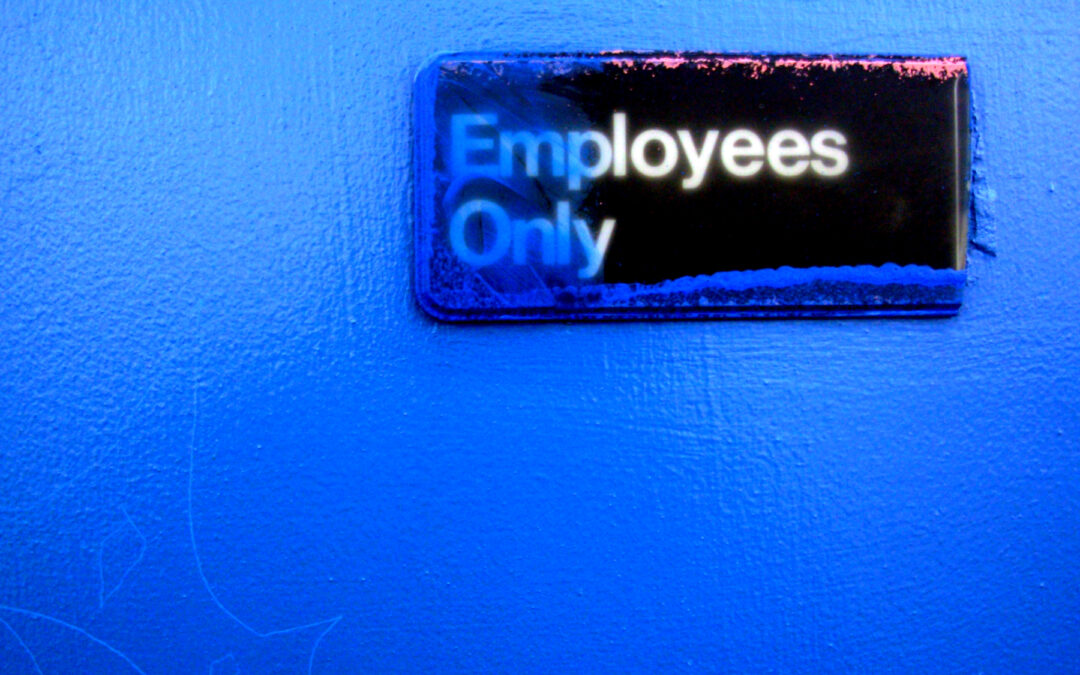
by Afilliated HR & Payroll | Jul 11, 2022 | Benefits & Compensation, HR Administration, Learning & Development
Can we discipline an employee for working for another employer during FMLA?
Yes, in two circumstances. First, you can discipline the employee if their other job violates your outside employment (aka moonlighting) policy. Second, you can discipline an employee who obtained FMLA leave fraudulently. If, however, you do not have a policy that specifically prohibits employees from working for other employers or if the employee’s work for the other employer is compatible with their health condition, then the fact that they are employed elsewhere during a leave is not cause for discipline. For instance, if the employee works a physically demanding job at Company A that they can’t perform because of a medical condition, they may still be able to work a desk job for Company B during leave.
The FMLA specifically allows employers to hold an employee on leave accountable to their uniformly applied moonlighting or outside employment policy. On the flip side, employers without such a policy can’t deny FMLA leave, including job protection and benefits continuation, to an employee just because they’re working elsewhere while on leave—unless you’ve got a case of FMLA fraud.
If you don’t have a moonlighting policy (or do but it’s not uniformly enforced), then the only other way to discipline an employee for working for another employer during their FMLA leave would be if their second job indicates that the employee lied to you about their serious health condition. For example, if the employee’s FMLA certification states that they need to be on bed rest to recover from surgery, and the employee is performing physical labor at the other place, you’ve got a case of FMLA fraud. Fire away! In grayer situations, however, proceed with caution. The safest approach would be to require a recertification in light of the new information that casts doubt on the employee’s stated reason for leave or continuing validity of their original certification. Disciplining an employee on FMLA leave without knowing all the facts can easily give rise to an FMLA interference claim.
Content courtesy of the HR Support Center – https://affiliatedpayroll.myhrsupportcenter.com

by Afilliated HR & Payroll | Jun 16, 2022 | Alert, Benefits & Compensation, Regulatory Compliance
The Internal Revenue Service (IRS) has announced that its optional standard mileage rate will increase to 62.5 cents per mile driven for business purposes. The increase takes effect on July 1, 2022.
Use of this rate is optional, though it is widely used by employers as a standard rate for calculating mileage reimbursement for employees who use their personal vehicle for business purposes. If your organization uses the IRS rate to calculate mileage reimbursement, be sure to update your systems to account for this change.

by Afilliated HR & Payroll | Jun 10, 2022 | Benefits & Compensation, HR Administration
Are we required to pay summer interns?
It depends on whether the worker is considered an employee.
The U.S. Department of Labor (DOL) has adopted the primary beneficiary test to determine whether a worker is an employee or an intern. If the worker primarily benefits from the employment relationship, they can be classified as an intern, and they don’t have to be paid. If the employer primarily benefits, the worker must be classified as an employee and must be paid minimum wage and overtime under the Fair Labor Standards Act.
To determine who primarily benefits, consider the following:
- The extent to which the intern and the employer clearly understand that there is no expectation of compensation. Any promise of compensation, express or implied, suggests that the intern is an employee.
- The extent to which the internship provides training that would be similar to what would be given in an educational environment, including the clinical and other hands-on training provided by educational institutions.
- The extent to which the internship is tied to the intern’s formal education program by integrated coursework or the receipt of academic credit.
- The extent to which the internship accommodates the intern’s academic commitments by corresponding to the academic calendar.
- The extent to which the internship’s duration is limited to the period in which the internship provides the intern with beneficial learning.
- The extent to which the intern’s work complements, rather than displaces, the work of paid employees while providing significant educational benefits to the intern.
- The extent to which the intern and the employer understand that the internship is conducted without entitlement to a paid job at the end of the internship.
According to the DOL, the test is flexible, so no single factor is determinative. If you’re not sure whether the worker should be classified as an unpaid intern or paid employee, the safer option would be to classify them as an employee. Misclassification can be costly. And as is true when classifying any worker as a non-employee, check state law for additional requirements.
Content courtesy of the HR Support Center – https://affiliatedpayroll.myhrsupportcenter.com

by Afilliated HR & Payroll | Apr 26, 2022 | Benefits & Compensation, HR Administration
What is FMLA?
FMLA is short for the Family and Medical Leave Act, a federal law that provides employees with unpaid, job protected leave and benefits continuation in certain circumstances. People also commonly call leave under this law FMLA, as in “I’m going on FMLA.” FMLA generally provides 12 weeks of leave in a 12-month period (more if caring for an injured or ill service member).
To take FMLA leave, an employee must work for a covered employer, be eligible, and be using the leave for a covered reason. Let’s look at each in turn.
An employer is a covered employer if they have 50 or more employees for 20 or more weeks in the current or previous year.
An employee is eligible if they have worked for the employer for at least 12 months, worked at least 1,250 hours for the employer in the 12 months before the leave, and work at a location where the employer has at least 50 employees within 75 miles.
The following are covered reasons for leave under FMLA:
- The birth of a child and to care for the newborn child within one year of birth
- The placement of a child for adoption or foster care and to care for that child within one year of placement
- To care for the employee’s spouse, child, or parent who has a serious health condition
- A serious health condition that makes the employee unable to perform an essential function of their job
- Any qualifying exigency because the employee’s spouse, child, or parent is a military member on active duty
FMLA has detailed requirements, which you can learn more about on the platform.
Content courtesy of the HR Support Center – https://affiliatedpayroll.myhrsupportcenter.com

by Afilliated HR & Payroll | Mar 7, 2022 | Benefits & Compensation, HR Administration, Recruiting and Developing Talent
You’ve probably been hearing about the Great Resignation (or however you want to describe it) for months now. Even if you’re not dealing directly with increased turnover, your employees know they have options. Their friends, family, and people they know peripherally or on social media have made the leap and are gleefully announcing it on LinkedIn.
Some job-hoppers may be emboldened by the movement to quit good jobs in the hope of something better—better pay, more flexibility, or more opportunities for advancement. Some have simply been pushed to the brink by dead-end jobs, lousy company culture, or ineffective managers. Others have given up trying to “have it all” and left the workforce completely.
But what if employers could capitalize on this current “I quit” mood? What if you could keep your employees engaged, inspire loyalty, and make it easier to attract and hire those that are looking for that next best thing?
We’ve got some ideas for both prioritizing current employees and making it easier to attract new ones.
- Understand and be responsive to employee needs, motivations, and priorities. A paycheck may be the reason everyone has a job in the first place, but it’s not the only reason people choose to work or decide to work for one employer over another. Your employees stick with you because there’s something in it for them besides the money. The job is useful to them. Knowing why it’s useful enables you to keep employees satisfied and, better yet, make their jobs even more appealing.
- Prioritize employee development. A work environment in which people gain knowledge, learn new skills, and advance in their careers speaks more clearly and loudly than any marketing message can. People like working where they can grow and develop. According to a LinkedIn report, companies “that excel at internal mobility are able to retain employees nearly twice as long as companies that struggle with it.” And a better trained workforce is also a more productive and profitable workforce!
- Invite employees to be co-creators of the organization. Empower them to make decisions about how things are done and where the organization is going. People feel more a part of something when they see themselves in it. They’re more engaged when their decisions bring about real change.
- Reward success. In fact, reward anything you want to see more of. Whether large or small, the rewards have to be meaningful. Ideally, figure out what type of reward speaks to each employee. For some, acknowledgment in a company meeting will make their heart sing. For others, receiving a token of your appreciation, such as a coffee gift card, will be more meaningful.
- Allow for a healthy work-life balance. Flexibility is a big selling point for employees looking for better balance between work and life. Your employees have other commitments they need to attend to. Some are caring for young children or other family members while navigating daycare and school closures or multiple appointments. Give employees the time to see to those commitments and have a life outside of work, and you’ll get more from them when they’re on the job. Options may include remote or hybrid work, paid time off, flex hours, four-day workweeks, alternative schedules, and reducing workload. Remember, however, that policies are only as good as the practices around them. Ensure that employees don’t need to jump through hoops to request time off. Remind managers to be responsive to requests for time off and on the look out for signs that employees are feeling overwhelmed.
- Conduct “stay interviews.” Don’t wait until people are leaving to investigate what could have inclined them to stay. Talk to employees now about what’s going well, what pain points they’re experiencing, and what could be done to take the relationship to the next level. Stay interviews enable you to address problems and unfulfilled wishes before they drive people out the door.
Let people go who want to go. You have only so much time in the day. Don’t spend it trying to entice people to stay if they really want to leave the organization. That time is better spent ensuring smooth transitions and engaging employees who don’t have one foot out the door.

by Afilliated HR & Payroll | Jan 6, 2022 | Benefits & Compensation, HR Administration, Reminder
What is a leave entitlement?
The term leave can refer to just about any type of time away from work, but it’s often used to describe time an employee is entitled to take by law or company policy. Common leave entitlements include vacation, personal days, and sick days. Other forms include time off taken for bereavement, military service, jury duty, and birth or adoption of a child.
Whether a leave is paid or unpaid depends on what the law or your policy requires for that type of leave. Leave under the Family and Medical Leave Act, for example, is unpaid, though employers may choose to layer paid leaves on top of it (like paid parental leave that the company offers by choice). Most state sick leave laws, however, require the time off to be paid.
Content courtesy of the HR Support Center – https://affiliatedpayroll.myhrsupportcenter.com






